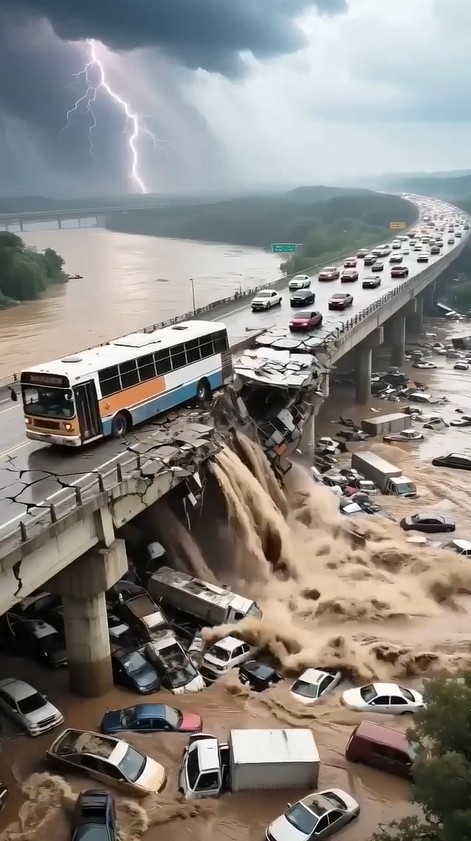A strong earthquake jolted parts of Southern California early Monday morning, startling residents out of sleep and reminding everyone just how fragile life can feel along the state’s most infamous fault lines. According to the U.S. Geological Survey (USGS), the quake registered a preliminary magnitude of 5.4, centered in a region where two of the Earth’s great tectonic plates—the Pacific and North American plates—collide and grind against each other. This geological tension explains both the intensity of the shaking and the ever-present risk that defines life in California’s seismic zones.

The quake struck shortly after 4:10 a.m., catching many people completely off guard. For several seconds, the ground shuddered violently, rattling windows, setting off car alarms, and sending small household items tumbling to the floor. Across cities like Los Angeles, Riverside, and San Bernardino, startled residents described being jolted awake by what felt like a thunderous vibration traveling through the earth.
“It felt really bad,” said 32-year-old Ana Morales from Riverside, who was home with her two children when the shaking began. “At first, I thought a truck hit the building, but then everything started moving—walls, lights, everything. My kids started crying, and we ran outside in our pajamas.”
Dozens of similar accounts appeared online within minutes. On social media, hundreds of Californians described the earthquake as “brief but intense,” with many saying it felt stronger than its reported magnitude. Some compared the low, rolling rumble to the sound of a passing freight train. Videos posted on X (formerly Twitter) and TikTok showed ceiling lamps swaying, dogs barking uncontrollably, and people rushing out of their homes into the chilly pre-dawn air.
Although no deaths or serious injuries were reported, local officials were quick to take precautions. Several school districts in Riverside County and neighboring areas canceled morning classes to allow for building inspections. Emergency response teams were dispatched to assess key infrastructure, including bridges, hospitals, and highways. Authorities emphasized that these inspections were standard protocol in a region so frequently tested by seismic activity.
Governor Gavin Newsom’s office released a brief statement urging calm but reminding residents to stay prepared. “California has one of the most advanced earthquake monitoring and emergency systems in the world,” the statement read. “There are no reports of major damage or casualties at this time, but residents are encouraged to review their emergency plans and supplies.”
The quake’s epicenter was located along the San Andreas fault system, one of the most studied—and feared—fault lines on the planet. Stretching more than 800 miles through California, from the Salton Sea in the south to Cape Mendocino in the north, the San Andreas marks the boundary between two massive tectonic plates that slowly grind past one another at a rate of about two inches per year. This slow-motion collision stores immense energy underground, which is occasionally released in sudden, violent bursts—earthquakes like this one.
Experts say Monday’s quake serves as another reminder that Southern California remains an active seismic zone, long overdue for a major event. Dr. Laura Kim, a seismologist at the California Institute of Technology, noted that while a magnitude 5.4 earthquake is considered “moderate,” its location raises concern. “The San Andreas fault is capable of producing quakes far larger than what we saw this morning,” she explained. “This kind of movement is a normal part of plate interaction, but it’s also a wake-up call for preparedness.”
Indeed, the USGS has warned for years that California faces a significant probability of a magnitude 7.5 or greater earthquake within the next few decades. The last catastrophic event of that scale in the southern segment of the San Andreas occurred in 1857, long before modern cities and highways covered the region. If such a quake were to strike today, experts estimate it could cause billions of dollars in damage and affect millions of people.
Despite these risks, Californians have learned to live with the earth’s restlessness. Earthquake drills, emergency kits, and early warning alerts are now part of everyday life. The state’s ShakeAlert system, which uses sensors to detect seismic waves and send smartphone alerts seconds before shaking begins, was activated during Monday’s quake. Some users reported receiving the alert just moments before they felt the ground move—enough time to duck under a table or move away from falling objects.
For many, those precious seconds mattered. “My phone buzzed, and it said, ‘Earthquake detected—expect shaking,’” said college student Miguel Santos from Pomona. “Not even five seconds later, my whole apartment started to shake. It wasn’t long, but it was powerful. The alert definitely helped me react faster.”
Utility companies also moved quickly to assess potential hazards. Southern California Edison confirmed brief power outages in parts of Riverside and Orange counties but said electricity was restored within an hour. Gas companies reported no leaks or fires related to the quake. Transportation officials conducted rapid visual checks of major freeways, finding only minor cracks on some older overpasses.
Residents, while rattled, showed their characteristic resilience. Many took to social media to exchange safety tips and jokes—one popular post read, “Only in California do you check if it’s an earthquake or just your upstairs neighbor moving furniture.” But alongside the humor came a sobering sense of awareness.
“This was a reminder that we’re always just one big quake away from a real disaster,” said Pasadena resident and geologist Mark Dalton. “People should take this seriously—secure heavy furniture, know your evacuation routes, and keep an emergency kit handy. You can’t stop the earth from moving, but you can be ready.”
By late morning, life in Southern California had largely returned to normal. Schools that had suspended classes were planning to reopen Tuesday, and traffic on major routes flowed smoothly. Still, scientists continued to monitor aftershocks, some of which reached magnitudes between 2.0 and 3.5. While these smaller quakes caused no damage, they were enough to keep residents uneasy.
As the sun set over the Pacific that evening, the memory of the early morning quake lingered. For longtime Californians, it was yet another reminder of living on shifting ground—a reality that is both humbling and unchanging. Though the state’s residents have grown accustomed to tremors, every shake rekindles the same thought: preparedness isn’t optional, it’s essential.
In a place where the land itself never truly rests, Californians know the drill—literally. Whether it’s securing bookshelves, rehearsing “drop, cover, and hold on,” or checking emergency alerts, the lesson remains the same: stay ready, stay calm, and respect the power beneath your feet.





